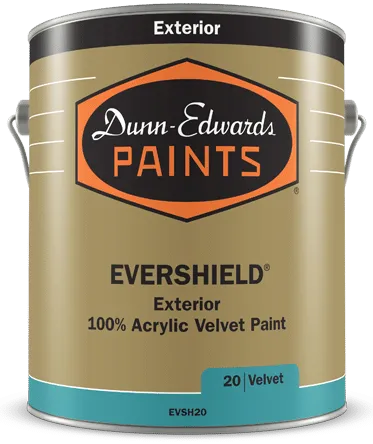Year-End Planning Tips
12/06/2017 | Dunn Edwards |
It’s difficult to believe that the holidays are already upon us and — while we understand how busy you are — now is perfect the time to do some year-end planning so you can start 2018 on the right foot! From tax tips and inventory control, to equipment and vehicle maintenance and management, here are some tasks to consider tackling before the ball drops in Times Square:
Tax Prep
It’s important for painting contractors to take measures before the year end that may help them come tax time. By now, you should have a pretty clear picture of your 2017 income, allowing you to make a plan regarding how to maximize profits, while lowering your tax liability. Consider discussing the following with your tax advisor:
Prepare in advance — Adequate cash flow is vital to a small business so knowing how much tax you may owe gives you the opportunity to set money aside or get a line of credit. Also ask your accountant if it makes sense to pay quarterly estimated taxes next year, allowing you to distribute the tax burden throughout the year instead of having to make a large tax payment in April.
Set up a retirement savings plan — In addition to personal IRA contributions, paint contractors who have employees have several options for employer-sponsored retirement savings plans, including a SIMPLE IRA, SEP IRA, 401(k) or profit-sharing plan. Contributions you make for yourself and your employees may be tax-deductible. Small businesses may also get a tax credit to help cover the cost of starting certain retirement plans.
Buy new equipment — In 2017, you could be entitled to a significant federal tax deduction for the purchase of new or used equipment. To qualify for the deduction, you must finance or purchase the equipment and put it into service before the last day of the year. The remaining cost of capital equipment purchases can be depreciated over time, based on the applicable federal tax laws.
Defer revenues and accelerate expenses, or vice versa — If your profits look like they’re going to be higher this year, you may want to defer revenue during the last part of the year. This could reduce your 2017 taxable income. Consider billing late in December or pay some 2018 costs in advance. Alternatively, if you expect your business to be more profitable in 2018 than this year, you might consider accelerating cash collection this year and delaying deductible expenses until the beginning of the New Year.
Make a charitable contribution— By donating cash, sponsoring a charitable event, donating inventory or services, or giving away used equipment that's sitting idle, you can fulfill your objective for corporate social responsibility, while involving your employees in an altruistic activity. In addition, it could provide you with a tax deduction that is typically equivalent to the fair market value of the property donated.
For additional guidance, click here to review the Windes Accounting 2017 tax planning handout.
Inventory
Controlling inventory is a key step in reducing purchasing and waste disposal costs. The following are some ideas about how to effectively control your inventory of paint and solvents. Some may already be common practice for you, while others may be new ideas to try.
Buy only the paint you need — To reduce the amount of leftover paint after a job, bulk order 90 percent of your estimated paint needs, then buy smaller quantities of paint to finish the job.
Label paints left for client touch-up — Leaving paint with the client for later touch-ups is a great way to reduce paint waste. You can also demonstrate your high level of customer service by labeling the paint cans with information such as where the paint was used, application date and color.
Use up your paint — Blend leftover paint and reuse it. It is possible to use leftover paints on another job as a primer or undercoat, and well-matched light-color paints can often be combined for reuse.
Smart storage — Keep inventory visible by building narrow, open shelving so that paint is not hidden behind other cans. Put the shelf somewhere you’ll see it every day and don’t forget to check the shelf before ordering new paint.
Give it away — Before your paint reaches the end of its shelf life, take a moment to decide if you will actually use it. If not, reach out to local community groups, schools, churches or others who would put it to good use.
Equipment
This is also a great time to take stock of your equipment. Taking time now to confirm you have all the tools you need to get the job done right will save you time, money and headaches down the road. For example:
Basic sundries — Ensuring that you have enough sundries (including tape, brushes, rollers, drop clothes, etc.) will save you last-minute trips to the store — time better spent on the job or growing your business.
Ladders and scaffolding — The last way you want to start the New Year is with an accident. Check your ladders and scaffolding for wear and tear and replace if necessary.
Spray equipment and accessories — Make sure your spray equipment and accessories are in good working order and not leaking. If you need some equipment fixed, find your nearest Dunn-Edwards repair center here.
Vehicle Maintenance
Of course, it’s vital that you set aside some time to take care of your invaluable workhorse — your truck! You drive daily from job to job – so now is the time to do your routine maintenance, as well as consider the addition of a few after-market accessories that can make your job easier!
Oil change — Changing your oil on a regular basis is vital to keeping your truck in tip-top shape, as doing so keeps the engine lubricated, cools engine components, removes dirt particles and improves gas mileage.
Tire rotation or new tires — Tire rotation helps maintain an even amount of treadwear on all four tires, prolonging the life of your tires, as well as your truck’s suspension components; improving gas mileage; and giving you a smoother, more comfortable ride. If your tires are too worn, be sure to them replace them as soon as possible.
Cleaning — You only get one chance to make a good first impression so make sure your truck reflects your professionalism. Give your vehicle a deep clean — inside and out — and deliver the best impression to your current (not to mention, potential) clients.
Equip your vehicle — There are numerous truck accessories out there — from storage and organizing systems, to racks and toolboxes, to cargo stabilizing bars. They can help make your life easier by saving you time and keeping your tools secure. Learn more.
Remember: Taking care of the little things now means you won’t have to worry about huge problems down the road. That said, we at Dunn-Edwards wish you the happiest of holidays, and a bright and profitable 2018!
Sources: Merrill Lynch, “5 End-of-Year Tax Tips for Small Business” and Washington State Department of Ecology, “Inventory Control for the Paint Contracting Industry”
















